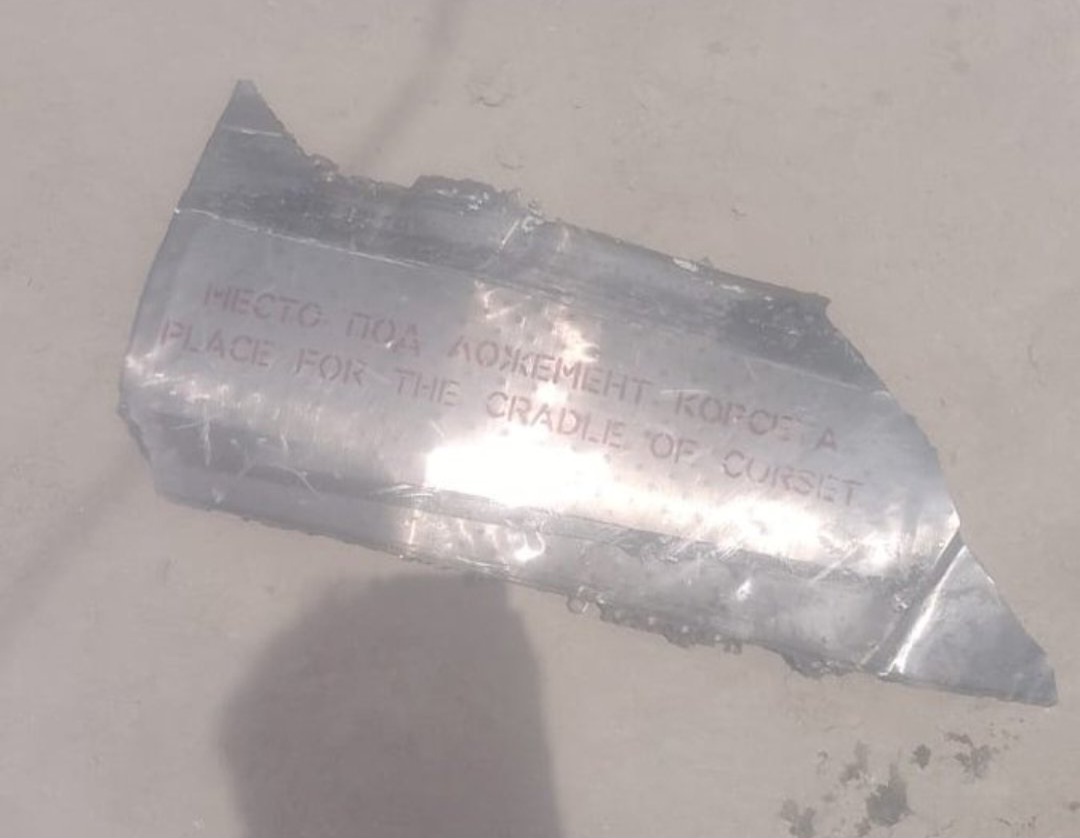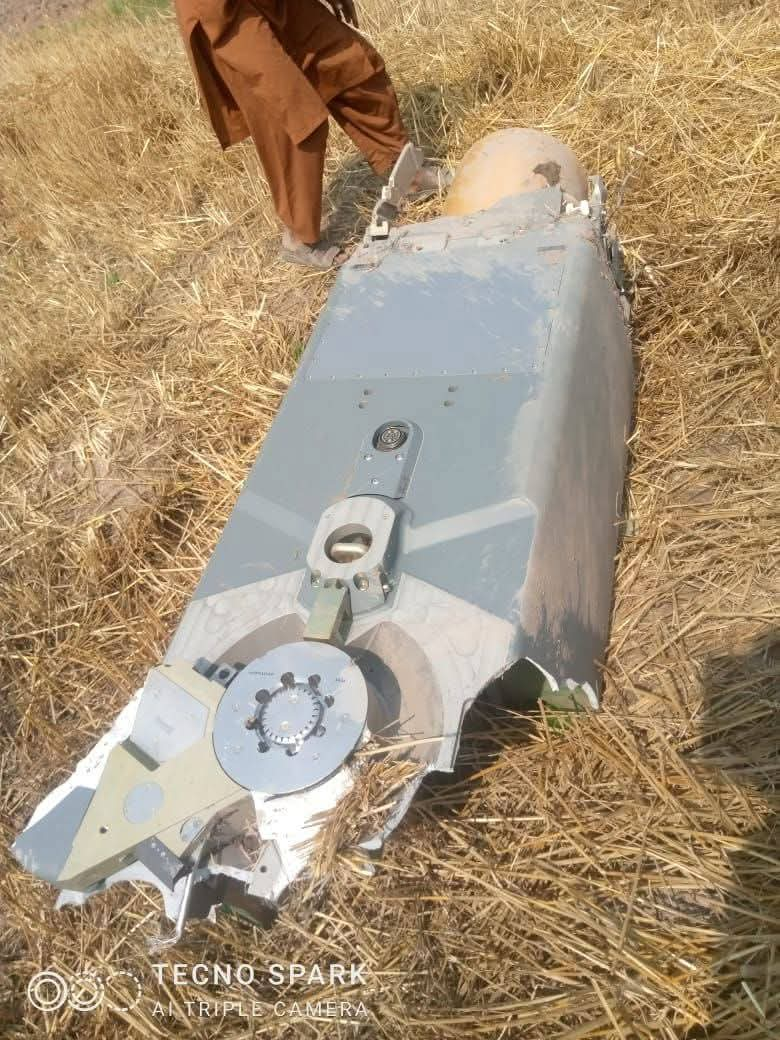(VIDEO) Pakistan Downs Indian Cruise Missiles BrahMos, SCALP EG in High-Stakes Airbase Strikes
Local Pakistanis media reports, corroborated by video footage and photographic evidence, showed debris from the high-speed cruise missile scattered across multiple areas of Jacobabad, indicating a mid-air interception.
(DEFENCE SECURITY ASIA) – At least one BrahMos supersonic cruise missile, jointly developed by India and Russia, was successfully intercepted and shot down by Pakistani air defence systems over Jacobabad airspace on May 10, as it attempted to strike the strategically vital Shahbaz Air Force Base.
Local Pakistanis media reports, corroborated by video footage and photographic evidence, showed debris from the high-speed cruise missile scattered across multiple areas of Jacobabad, indicating a mid-air interception.
Among the wreckage were components believed to be part of the missile’s seeker head, resembling Russian-origin systems, which the Indian Air Force is reportedly planning to replace with an indigenously developed seeker in future variants.
While one of the BrahMos missiles was intercepted over Jacobabad, another missile reportedly evaded interception and struck its intended target at PAF Shahbaz Air Base, resulting in localized damage to infrastructure.
Images circulating on social media revealed minor structural damage to Shahbaz Air Base, though no Pakistan Air Force aircraft or critical assets were reported to have been harmed by the Indo-Russian cruise missile.
According to additional Pakistani media sources, fragments found in Jacobabad closely resemble those discovered at the Bhawalpur Mosque, which was struck by an earlier Indian BrahMos missile between May 6 and 7, allegedly causing civilian casualties.
Shahbaz Air Base, located in Jacobabad, Sindh province, is one of Pakistan’s most strategically significant military installations and serves as the principal operational hub for the country’s most advanced F-16C/D Block 52+ fighter aircraft, procured from the United States.
Video Player
00:00
00:00

Positioned near the border with both India and Afghanistan, Shahbaz plays a pivotal role in airspace surveillance and rapid response to regional threats in southern and southwestern Pakistan.
Meanwhile, reports from local residents in Sargodha also indicated the interception of SCALP EG cruise missile fragments, believed to have been launched by Indian fighter jets, with Pakistani air defences again successfully neutralizing the threat before impact.
The SCALP EG, known as Storm Shadow in UK service, is a long-range, precision-strike cruise missile developed by European defence firm MBDA, and was likely launched from Indian Rafale or Mirage 2000 platforms.
Sargodha Air Base, officially designated as PAF Base Mushaf, is a critical node within Pakistan’s air defence architecture, housing the Air Force Central Command (AFCC) and acting as the strategic headquarters for offensive and defensive air operations.
Located in Punjab province, the base plays a key role in command and control, elite pilot training, and is widely believed to support Pakistan’s nuclear deterrence doctrine through conventional and dual-capable platforms.
Sargodha is also home to several squadrons operating the JF-17 Thunder, the domestically assembled multi-role fighter co-developed with China, including No. 16 “Black Panthers” and No. 26 “Black Spiders.”


The SCALP EG missile, with a strike range of over 250 km, is optimized for penetrating heavily defended airspace and neutralizing high-value targets such as command bunkers, airbases, missile silos, and strategic logistics nodes.
Equipped with multi-mode navigation systems—including GPS, INS, terrain contour mapping, and infrared imaging (IIR) seekers—SCALP EG maintains exceptional precision even under electronic warfare conditions.
Its BROACH warhead combines a penetrator charge and a secondary blast mechanism, allowing it to breach reinforced structures such as underground bunkers before initiating the main detonation.
Designed for stealth and survivability, the missile follows a low-observable flight profile, flying at nap-of-the-earth altitudes to avoid radar detection and programmed to approach targets from unexpected vectors via multiple waypoints.
This makes SCALP EG an ideal candidate for “first night” strikes—operations that seek to cripple enemy command structures before comprehensive air superiority is established.
In contrast, the BrahMos missile, developed under the Indo-Russian BrahMos Aerospace joint venture, represents a supersonic cruise missile system capable of launching from land, sea, and air platforms, with a maximum speed reaching Mach 2.8 to Mach 3.
Originally designed with a strike range of 290 km, the latest variant, BrahMos-ER (Extended Range), extends that capability to over 450 km, with future developments aiming for a 1,000 km-class variant.


The missile employs inertial navigation (INS), GPS/GLONASS guidance, and active radar homing in its terminal phase, enabling high-precision strikes against both mobile and fixed targets.
It can be launched from Su-30MKI multirole fighters, Indian Navy warships, and road-mobile land-based launchers, making it a cornerstone of India’s rapid strike and deep-penetration strategy.
Together, the deployment of SCALP EG and BrahMos cruise missiles by India reflects a doctrinal shift toward precision long-range warfare, highlighting the growing reliance on standoff munitions in South Asia’s increasingly contested airspace.
Pakistan’s ability to intercept and recover debris from these missiles marks a significant development in its air defence network’s credibility, especially in the face of evolving regional missile threats.
— DEFENCE SECURITY ASIA


